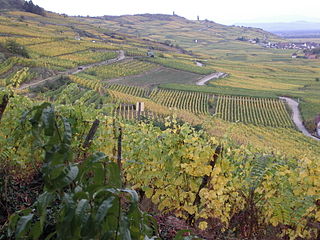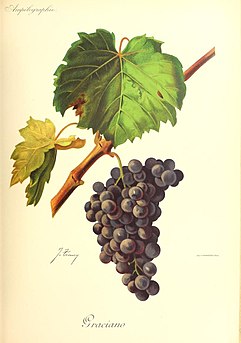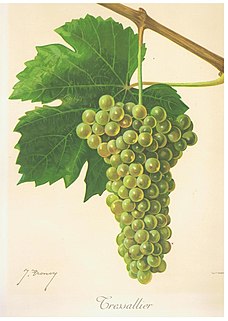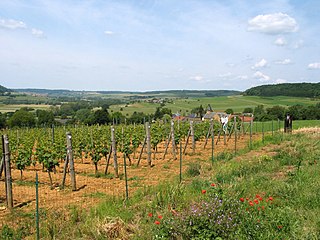Auxerrois is a historical province of France. Named after the city of Auxerre in Burgundy, it gives its name to several grape varieties:
The Kingdom of France was organized into provinces until March 4, 1790, when the establishment of the department system superseded provinces. The provinces of France were roughly equivalent to the historic counties of England. They came into their final form over the course of many hundreds of years, as many dozens of semi-independent fiefs and former independent countries came to be incorporated into the French royal domain. Because of the haphazard manner in which the provinces evolved, each had its own sets of feudal traditions, laws, taxation systems, courts, etc., and the system represented an impediment to effective administration of the entire country from Paris. During the early years of the French Revolution, in an attempt to centralize the administration of the whole country, and to remove the influence of the French nobility over the country, the entirety of the province system was abolished and replaced by the system of departments in use today.
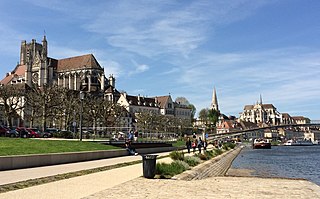
Auxerre is the capital of the Yonne department and the fourth-largest city in Burgundy. Auxerre's population today is about 39,000; the metropolitan area comprises roughly 92,000 inhabitants. Residents of Auxerre are referred to as Auxerrois.
- Auxerrois Blanc, a white wine grape that is widely grown in Alsace, and also in Lorraine, Germany and Luxembourg
- Malbec (or Côt), a red wine grape grown in the Cahors region of France, where it is known as Auxerrois
- Pinot gris, sometimes called Auxerrois Gris in France
- Valdiguié, known as Gros Auxerrois in the South of France

Malbec is a purple grape variety used in making red wine. The grapes tend to have an inky dark color and robust tannins, and are known as one of the six grapes allowed in the blend of red Bordeaux wine. The French plantations of Malbec are now found primarily in Cahors in South West France. It is increasingly celebrated as an Argentine varietal wine and is being grown around the world.
Pinot gris, pinot grigio or Grauburgunder is a white wine grape variety of the species Vitis vinifera. Thought to be a mutant clone of the pinot noir variety, it normally has a grayish-blue fruit, accounting for its name but the grapes can have a brownish pink to black and even white appearance. The word pinot could have been given to it because the grapes grow in small pine cone-shaped clusters. The wines produced from this grape also vary in color from a deep golden yellow to copper and even a light shade of pink, and it is one of the more popular grapes for skin-contact wine.
Valdiguié is a red wine grape grown primarily in the Languedoc-Roussillon region of southern France, where it is generally known by the alias Gros Auxerrois. In California it has been known as Napa Gamay or Gamay 15. Until 1980 Napa Gamay was believed to be the Gamay of Beaujolais, but following genetic analysis the name 'Napa Gamay' has been banned from U.S. wine labels since January 1999. Confusingly, both the Pinot noir clone Gamay Beaujolais and 'Napa Gamay' could be labelled 'Gamay Beaujolais', a name banned on labels from April 2007.
| This disambiguation page lists articles associated with the title Auxerrois. If an internal link led you here, you may wish to change the link to point directly to the intended article. |



